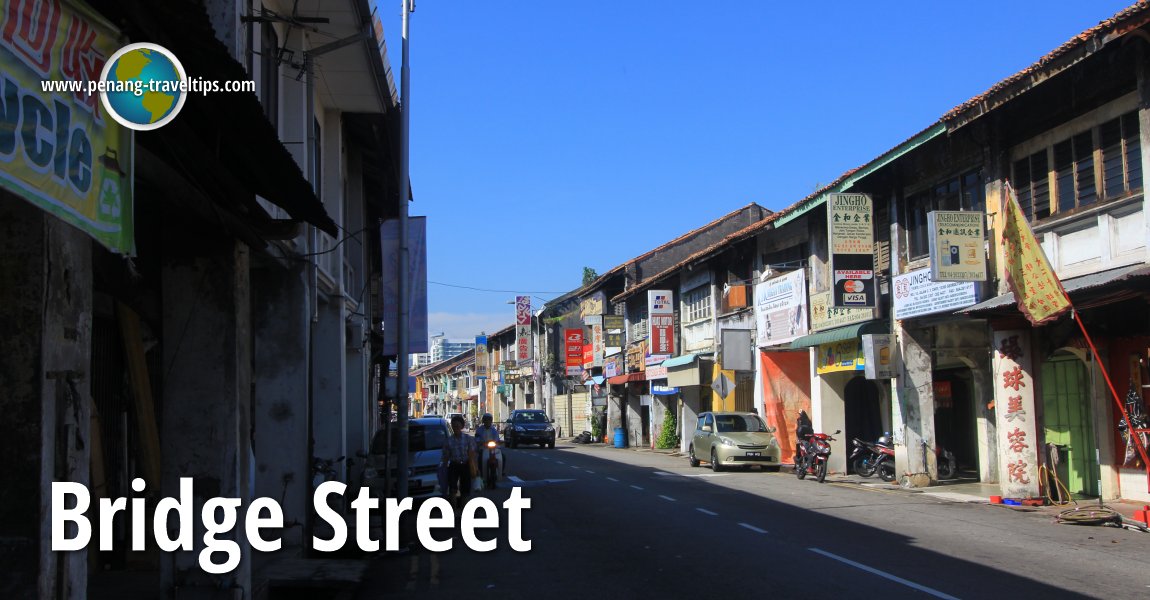 Bridge Street, Penang (6 February 2013)
Bridge Street, Penang (6 February 2013)
B. Melayu
Jalan CY Choy
 , formerly Bridge Street, is a major road in George Town. It starts at Anson Bridge - which gives it its name - across the Prangin Canal, and ends at the Sungai Pinang Bridge, leading to Jelutong Main Road. In between, it branches out to Jalan Magazine, Gat Jalan Magazine, Lebuh Noordin, Gat Lebuh Noordin, Lebuh Presgrave, Gat Lebuh Presgrave, Lebuh Tye Sin, Lebuh Macallum, Gat Lebuh Macallum, Lebuh Katz, Lebuh Cecil, Gat Lebuh Cecil, Lebuh Sandilands and Gat Lebuh Sandilands.
, formerly Bridge Street, is a major road in George Town. It starts at Anson Bridge - which gives it its name - across the Prangin Canal, and ends at the Sungai Pinang Bridge, leading to Jelutong Main Road. In between, it branches out to Jalan Magazine, Gat Jalan Magazine, Lebuh Noordin, Gat Lebuh Noordin, Lebuh Presgrave, Gat Lebuh Presgrave, Lebuh Tye Sin, Lebuh Macallum, Gat Lebuh Macallum, Lebuh Katz, Lebuh Cecil, Gat Lebuh Cecil, Lebuh Sandilands and Gat Lebuh Sandilands.
 Map of Jalan CY Choy, Penang
Map of Jalan CY Choy, Penang
 Sights along Bridge Street
Sights along Bridge Street
- Adorna Gold (GPS: 5.40495, 100.32575)

- Hexagon Tech Park (GPS: 5.40575, 100.32628)

- Menara Perdana (GPS: 5.40625, 100.32667)

- Pak Thean Keong Temple (GPS: 5.40649, 100.3291)

- Sandilands Condominium (GPS: 5.40513, 100.32852)

- Sandilands Foreshore (GPS: 5.40557, 100.32995)

- Seng Hong Beow Temple (GPS: 5.40633, 100.3289)

- SRJK (C) Sum Min (GPS: 5.40949, 100.33108)

- Sungai Pinang Bridge (GPS: 5.40436, 100.326)

 Eateries along Bridge Street
Eateries along Bridge Street
 Businesses along Bridge Street
Businesses along Bridge Street
- 66 Unisex Hair Saloon
- Aik Soon Heng Enterprise
- BL Boon Lee Auto Parts
- Chan Hoe Hardware Trading
- Chin Heng Design
- Chop Boon Sin Foundry
- Cinkoon Hardware
- Gogain Industry (metal works)
- Hi Style Hair Saloon
- Hoe Shen Trading
- Huat Motor (motorcycle repair shop)
- Hup Seng Engineering
- K.E. Chong Air Conditioning
- Kedai Runcit Sin Guan Soon (sundry shop)
- Kedai Ubat Peh Cheong Tong (Chinese medical hall)
- Khian Huat Steel Works (metal works)
- Kim Lye Construction
- Klinik Soon
- Laison Supplies
- Lye Advertising Enterprise
- New Silk Unisex Hair & Beauty
- Ninety Nine Furniture Design
- Oh Eng Huat Cake Shop
- Pidta Zillionaire Enterprise
- Pusat Bateri dan Tayar Lean Yi
- Recycle (Saro Metal Scrap Enterprise)
- Soon Way Hardware (PG) Sdn Bhd
- SS Hardware & Electrical Trading
- Tanjung Air-Cond Sales & Service
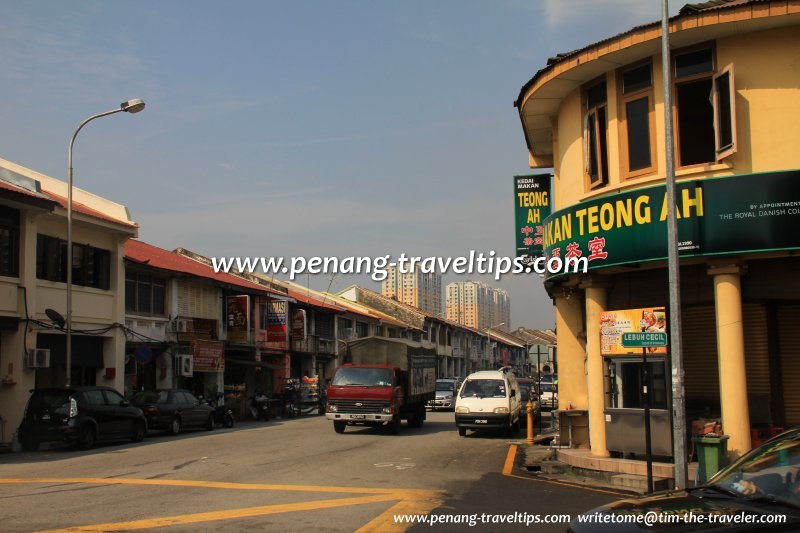 Bridge Street, at junction with Cecil Street (30 July 2012)
Bridge Street, at junction with Cecil Street (30 July 2012)
About Bridge Street
Until the mid 19th century, Bridge Street was considered "outskirts" of town, as it lies south of Sia Boey. On the area closest to the Prangin Canal, there was a Chinese kampung called Koay Kangnga, meaning "across the river". From this kampung, there developed a Chinese working class settlement. Until the late 19th century, this area was all attap houses, while Bridge Street itself faces the sea, shielded from it by clumps of mangrove trees and mud flats. The sea in front of Bridge Street was reclaimed between 1880 and 1904, and roads such as Prangin Road Ghaut, Cecil Street Ghaut, and so on, were built. The roads in the Chinese settlement off Bridge Street were aligned on nine parallel roads, and in the local Chinese language, Penang Hokkien, it was called Koay1 Kang3nga4 Thau3 Tiau3 Lor33, which means "first road across the river". This was later abbreviated to simply Thau3 Tiau3 Lor33 ("first road"). To the British administrators, though, this road was named Magazine Road . Next came 2nd road, 3rd road, and so forth, until Sandilands Street forms the nineth and final road.
. Next came 2nd road, 3rd road, and so forth, until Sandilands Street forms the nineth and final road.Bridge Street was renamed Jalan C.Y. Choy in the early 1980's, in memory of the third and last mayor of George Town. Choy of the Malayan Peoples' Socialist Front became mayor of George Town after winning the city election of 1964 in the Sungei Pinang Ward, with a high majority. He is often nicknamed the "Quiet Mayor of George Town" due to his low profile.
Choy served as mayor until 1966, when the Federal Government of Malaysia discontinued local elections for the city. When differences caused the Socialist Front to disintegrate, and its components the Labour Party and Parti Sosialis Rakyat Malaya going separate ways, Choy contested as an independent candidate for Pengkalan Kota, easily winning in the 1960 general elections. He remained active in politics until his death at age 73 in 1980.
Hows to go to Bridge Street
Rapid Penang Bus 302, 303, 307 and 401 pass through Jalan CY Choy.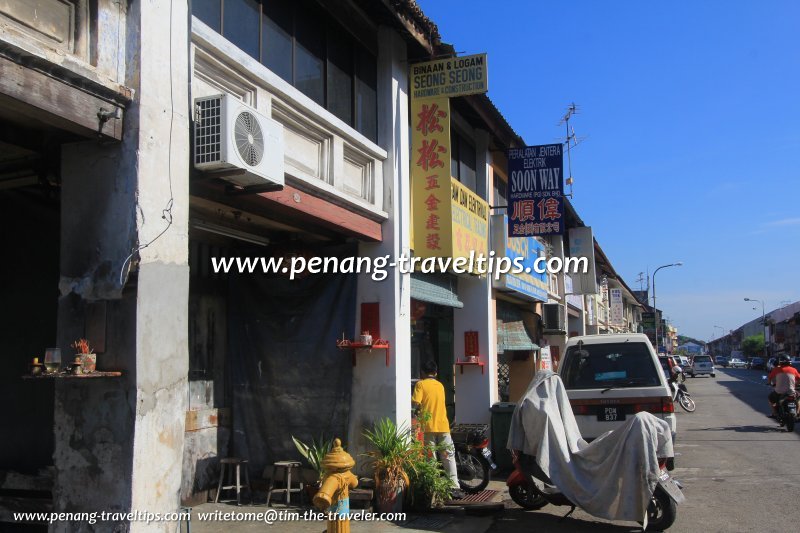 Bridge Street, George Town (6 February 2013)
Bridge Street, George Town (6 February 2013)
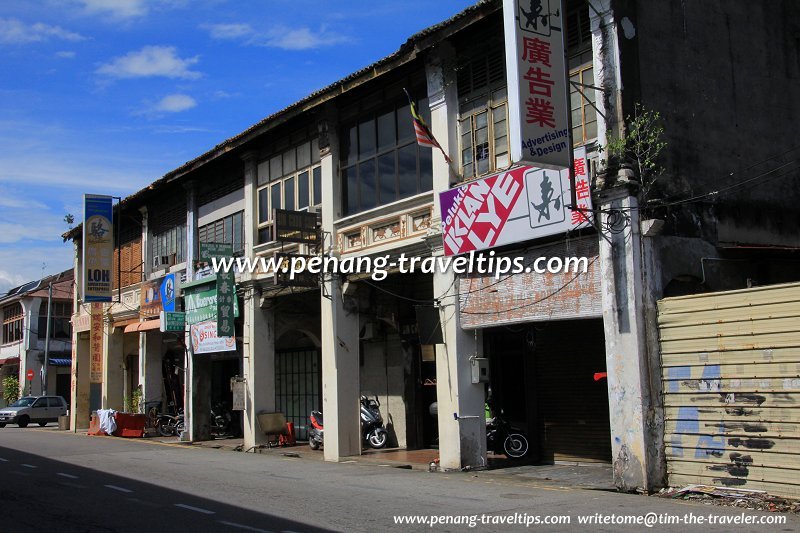 Shophouses along Bridge Street (15 December 2012)
Shophouses along Bridge Street (15 December 2012)
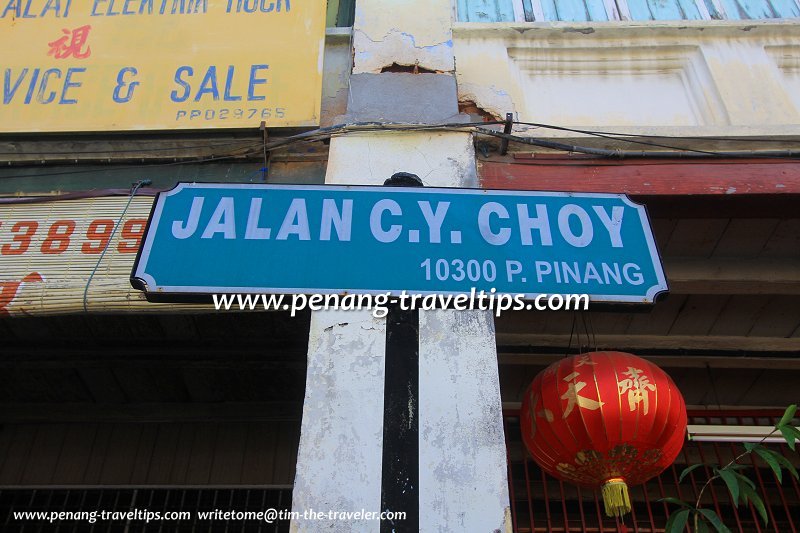 Jalan C.Y. Choy road sign (6 February 2013)
Jalan C.Y. Choy road sign (6 February 2013)
List of Streets in Penang and Streets in Malaysia

Copyright © 2003-2025 Timothy Tye. All Rights Reserved.

 )
) Go Back
Go Back